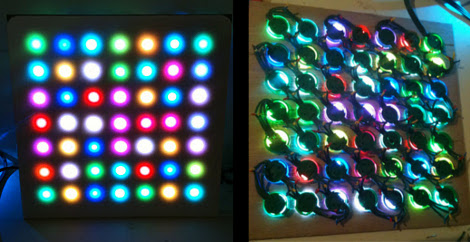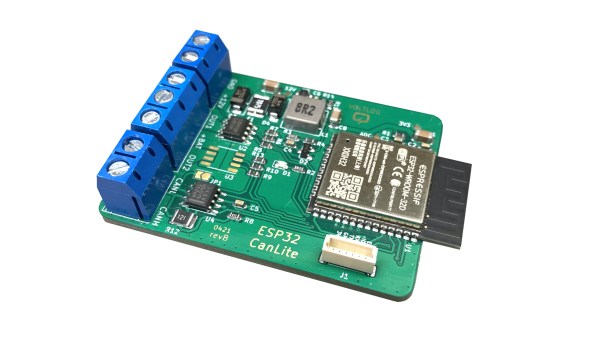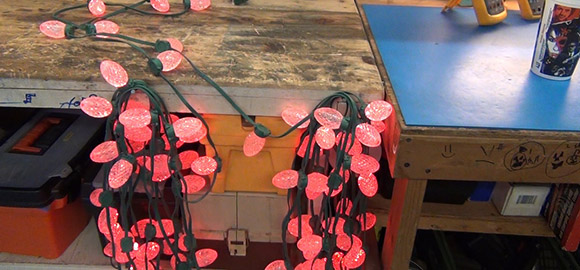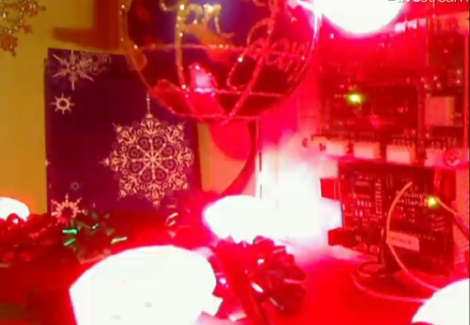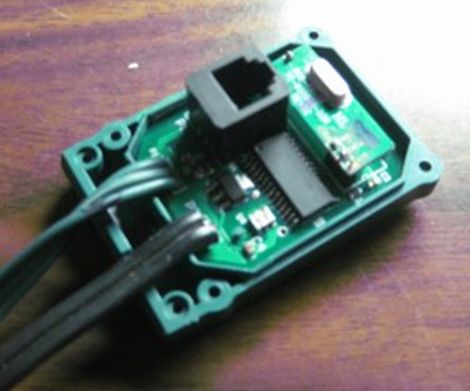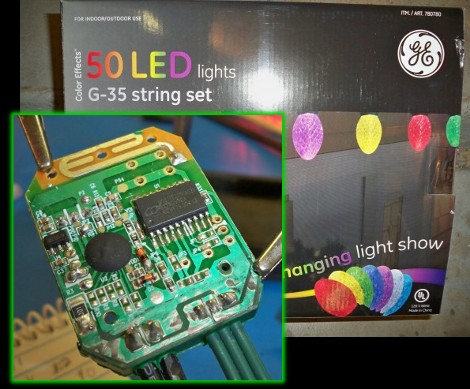
[Todd Harrison] took a slew of pictures in his quest to loose all the secrets of the G-35 Christmas Lights. These are a string of 50 plastic bulbs which house individually addressable RGB LEDs. We’ve seen a ton of projects that use them, starting about a year ago with the original reverse engineering and most recently used to make a 7×7 LED matrix. But most of the time the original control board is immediately ditched for a replacement. It’s become so common that you can now buy a drop-in board, no hacking needed. We enjoy the hard look that [Todd] took at the electronics.
The stock controller uses a single layer, single sided board. There’s a resin-blob chip, but also an SOP-20 microcontroller. Since [Todd’s] using several strings of lights on his house, he wondered if it would be possible to improve on the controller in order to synchronize the strands. His investigation showed that the board was designed to host a crystal oscillator but it is unpopulated. Unfortunately you can’t just add those parts to improve the timing of the chip (firmware changes would also be requires). He found that there’s a spot for a push-button. Quickly shorting the pads cycles through the effects, shorting them for a longer time turns off the string of lights. There is wireless control, but it seems that the only functionality it provides is the same as the unpopulated switch.
We enjoyed the close-up circuit board photos, and we like the spacing jig he used to attach the lights to his fascia boards. We’ve embedded a lengthy video about his exploits after the break. Continue reading “G-35 Circuit Board Porn”

